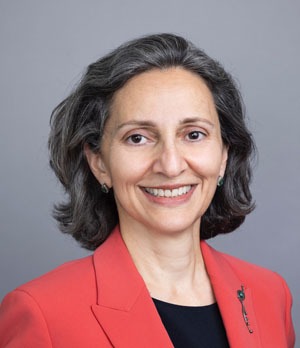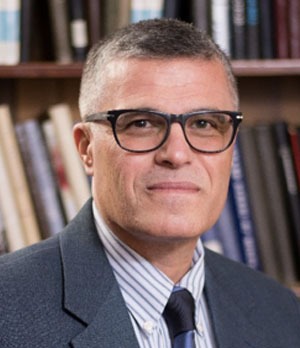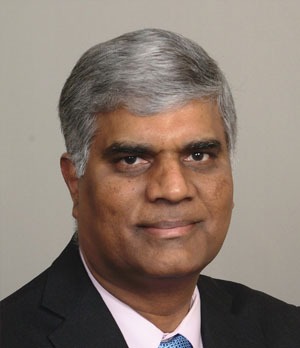Microwave imaging has long been recognized as a viable approach for medical applications. Nonlinear electromagnetic inverse scattering methods are the key enablers of such applications. These imaging systems are essentially multistatic (or tomographic) radars, allowing for noninvasive and non-ionizing diagnostics and treatment monitoring. In this short course, we provide a detailed look at both computational methods and measurement systems for high-resolution 3D imaging for these medical applications. We go beyond the traditional diagnostic imaging and consider the use of microwave imaging for near-real-time intra-operative thermal therapy monitoring, which has been a clinical gap when delivering Radio frequency (RF) ablation and hyperthermia treatments. For delivering thermal therapies, a persistent challenge is monitoring the temporal and spatial progression of heat deposition to prevent under- or over-treatment. Given the strong dependence of the permittivity of both healthy and malignant biological tissue on temperature, the efficacy of microwave imaging for monitoring of thermal treatments has gained much attention in the past several years.
In this course, the following topics will be presented:
We will show that by using progressively accelerated inverse scattering methods for estimating tissue dielectric constant, we are able to map the temperature of the 3D treatment domain in near-real time. Several results will be discussed that show successful retrieval of dielectric constant and temperature fields with a precision of 1o C and spatial resolution of sub-cm at a refresh rate of about 1 frame per second, which has the promise of making this technology realistically useful in a clinical setting.
Mahta Moghaddam is Distinguished Professor and Ming Hsieh Endowed Chair in Electrical and Computer Engineering at the Viterbi School of Engineering, University of Southern California (USC), Los Angeles, CA, USA. She currently serves as the Viterbi School Vice Dean for Research and Co-Chair of the USC President’s Working Group on Sustainability. Prior to USC she was at the University of Michigan (2003-2011) and NASA Jet Propulsion Laboratory (JPL, 1991-2003). She received the B.S. degree in 1986 from the University of Kansas, Lawrence, Kansas with highest distinction, and the M.S. and Ph.D. degrees in 1989 and 1991, respectively, from the University of Illinois at Urbana-Champaign, all in Electrical and Computer Engineering. Prof. Moghaddam’s expertise is in microwave sensing for environmental and biomedical applications. She was Systems Engineer for the Cassini Radar and served as Science Chair of the JPL Team X (Advanced Mission Studies Team). Her most recent research interests include the development of multistatic radar instrument and measurement technologies, including software-defined radar, for subsurface characterization, development of forward and inverse scattering techniques for random and heterogeneous media for tracking water resources, and transforming concepts of radar remote sensing to medical imaging and therapy systems. She and her team have long been involved in developing microwave imaging systems for intra-operative near-real-time imaging of thermal therapies. They have shown the utility of multi-static multi-frequency microwave imaging for tracking thermal treatments in live animal models.
Prof. Moghaddam is a member of the Science Team of the NASA Cyclones Global Navigation Satellite System (CYGNSS) mission, and the NASA Arctic Boreal Vulnerability Experiment (ABoVE). She was the principal investigator of the AirMOSS NASA Earth Ventures 1 mission. She is a Fellow of IEEE and a member of the National Academy of Engineering.

Electrical and Computer Engineering, Viterbi School of Engineering, University of Southern California (USC), Los Angeles, USA
The course is free for all participants in the conference; to follow the course you need to send an email to [email protected] with subject: “Registration for Prof. Mahta Moghaddam’s short course”
Reflectarrays and transmitarrays have emerged as the new generation of high-gain antennas which have attracted an increasing interest in the antenna/electromagnetic community because of their low-profile, low-mass, and low-cost features. These antennas are a hybrid design, which combines the many favorable features of reflectors, lens, and printed arrays, and offer many notable advantages over traditional reflectors and lens high-gain antennas. The advantages of reflectarrays and transmitarrays make them very desirable for various communication systems, especially those with mobile platforms. Their applications in space exploration, satellite communications, remote sensing, and radar systems are also on the rise, and will continue to increase in the future.
The aim of this short course is to present a comprehensive overview of reflectarrays and transmitarrays system design and state-of-the-art technology. Specifically, the following topics will be addressed:
Recent design and reconfiguration using pixelated reflectarray antennas.
Illustrative examples for several designs that can serve as good references for attendees.
In summary, the presentation will provide the fundamental capabilities and skills required for a researcher interested in the field of reflectarray and transmitarray antennas.
Atef Z. Elsherbeni received an honor B.Sc. degree in Electronics and Communications, an honor B.Sc. degree in Applied Physics, and a M.Eng. degree in Electrical Engineering, all from Cairo University, Cairo, Egypt, in 1976, 1979, and 1982, respectively, and a Ph.D. degree in Electrical Engineering from Manitoba University, Winnipeg, Manitoba, Canada, in 1987. He started his engineering career as a part time Software and System Design Engineer from March 1980 to December 1982 at the Automated Data System Center, Cairo, Egypt. From January to August 1987, he was a Post-Doctoral Fellow at Manitoba University. Dr. Elsherbeni joined the faculty at the University of Mississippi in August 1987 as an Assistant Professor of Electrical Engineering. He advanced to the rank of Associate Professor in July 1991, and to the rank of Professor in July 1997. He was the Associate Dean of the College of Engineering for Research and Graduate Programs from July 2009 to July 2013 at the University of Mississippi. He then joined the Electrical Engineering and Computer Science (EECS) Department at Colorado School of Mines in August 2013 as the Dobelman Distinguished Chair Professor. He was appointed the Interim Department Head for EECS from 2015 to 2016 and from 2016 to 2018 he was the Electrical Engineering Department Head. He spent a sabbatical term in 1996 at the Electrical Engineering Department, University of California at Los Angeles (UCLA) and was a visiting Professor at Magdeburg University during the summer of 2005 and at Tampere University of Technology in Finland during the summer of 2007. In 2009 he was selected as Finland Distinguished Professor by the Academy of Finland and TEKES.
Dr. Elsherbeni is an IEEE Life Fellow and ACES Fellow. He is the Editor-in-Chief for ACES Journal, and a past Associate Editor to the Radio Science Journal. He was the Chair of the Engineering and Physics Division of the Mississippi Academy of Science, the Chair of the Educational Activity Committee for IEEE Region 3 Section, and the general Chair for the 2014 APS-URSI Symposium and the President of ACES Society from 2013 to 2015. Dr. Elsherbeni is selected as Distinguished Lecturer for IEEE Antennas and Propagation Society for 2020-2023. He is also the recipient of the 2023 IEEE APS Harington-Mittra Award for his contribution to computational electromagnetics with hardware acceleration.

Engineering Department, Colorado School of Mines
The course is free for all participants in the conference; to follow the course you need to send an email to [email protected] with subject: “Registration for Prof. Atef Elsherbeni’s short course”
Now-a-days antennas have become an integral and important part of almost any wireless communication system. In the field of antenna engineering, theoretical analysis is of paramount importance in understanding the basics of the antenna radiation characteristics. While the basic concept of antennas is well known, closed form, exact analytical solutions to many antenna problems are not practical and impossible in many cases. Advances in electromagnetic (EM) simulations have significantly impacted the antenna design process by providing exact solutions by solving Maxwell’s equations using numerical methods. It is a common practice now in academia and industry to use various commercially available EM simulation tools for antenna design process. In this short course, we will introduce basics of antenna modeling and simulation process with pros and cons of various numerical methods, such as Method of Moments (MoM), Multilevel Fast Multipole Method (MLFMM), Finite Element Method (FEM), Finite Difference Time Domain (FDTD), Physical Optics (PO), Ray Lunching Geometrical Optics (RL-GO), and Uniform Theory of Diffraction (UTD). We will then discuss modeling and simulation of various antenna types, starting from simple configurations such as dipoles and loops and eventually leading to more complicated and practical designs such as microstrip patches and high-gain reflector antennas.
Dr. C.J. Reddy is Vice President, Business Development-Electromagnetics for Americas at Altair Engineering, Inc. Dr. Reddy was awarded the Natural Sciences and Engineering Research Council (NSERC) of Canada Visiting Fellowship to work at Communications Research Center in Ottawa during 1991-1993 and was awarded the US National Research Council (NRC) Resident Research Associateship in 1993 to work at NASA Langley Research Center in Hampton, Virginia. He also worked as Research Professor at Hampton University from 1995 to 2000. Dr. Reddy was the President of Applied EM, Inc (2000-2017) where he led several Phase I and Phase II SBIR projects for the DoD and NASA. He was also the President of EM Software & Systems (USA) Inc (2002-2014) and led the marketing of the EM Simulation tool, Feko in North America. EM Software & Systems (USA) Inc was acquired by Altair in 2014.
Dr. Reddy is a Fellow of IEEE, Fellow of ACES (Applied Computational Electromagnetics Society) and a Fellow of AMTA (Antenna Measurement Techniques Association). Dr. Reddy is a co-author of the book, “Antenna Analysis and Design Using FEKO Electromagnetic Simulation Software,” published in June 2014 by SciTech Publishing (now part of IET). Dr. Reddy served as an Associate Editor for IEEE Open Journal of Antennas of Propagation and IEEE Transactions on Antennas and Propagation. He served as the Chair of IEEE Antennas and Propagation Society (AP-S) Young Professionals Committee during 2021-2024 and served on the AP-S AdCom during 2023-2024. Dr. Reddy is appointed to IEEE Fellows Committee by IEEE Board of Directors for the terms 2020-2021 and 2022-2023. Currently, Dr. Reddy is serving as the 2025 IEEE AP-S President-Elect. Dr. Reddy is inducted into IEEE Heritage Circle by the IEEE Foundation for establishing the “IEEE AP-S CJ Reddy Travel Grant for Graduate Students.”

Vice President of Business Development – Electromagnetics (Americas), Altair, USA
2025 IEEE AP-S President-Elect
The course is free for all participants in the conference; to follow the course you need to send an email to [email protected] with subject: “Registration for Dr. CJ Reddy’s short course”